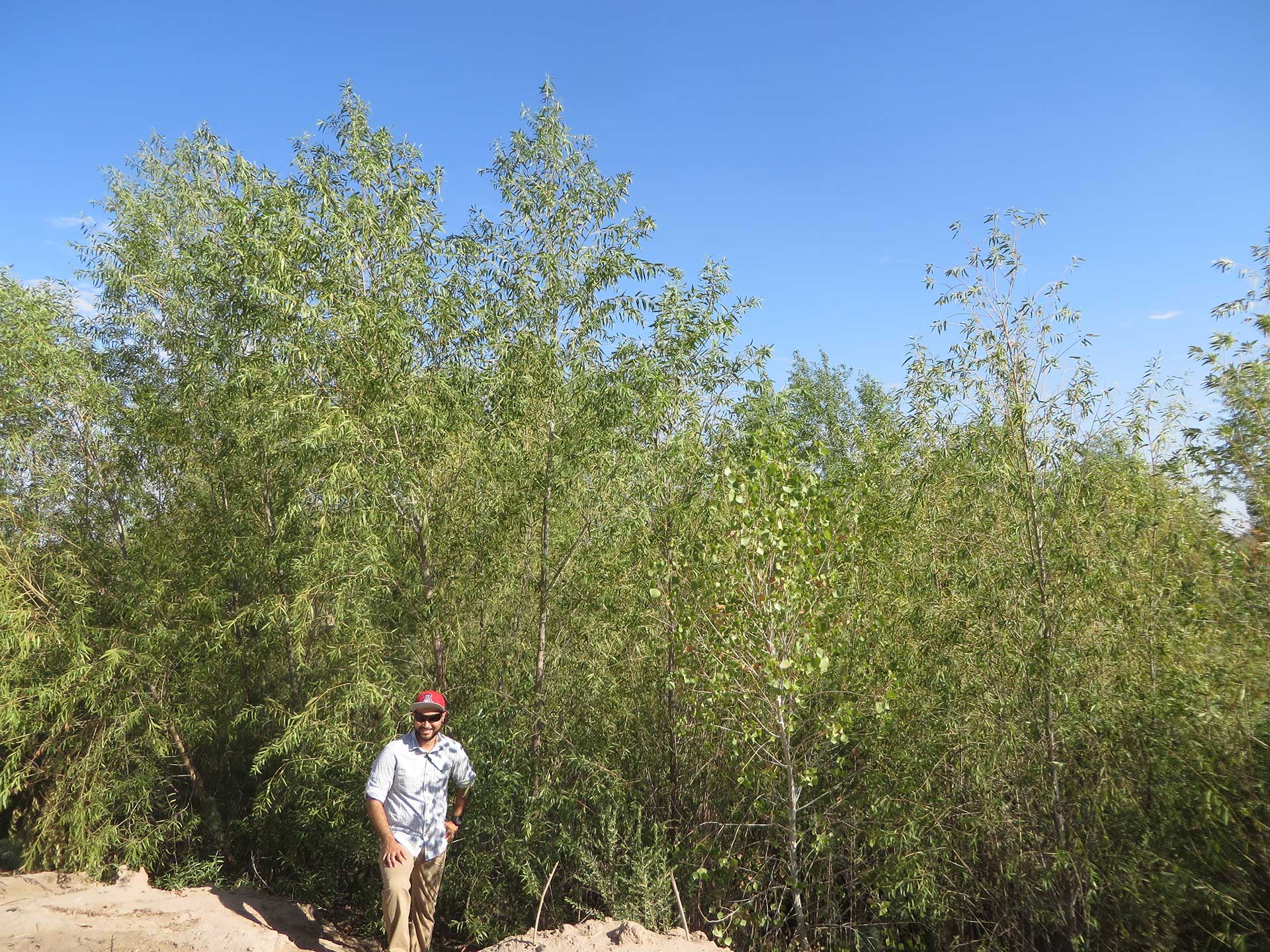 VIEW LARGER Naturally-germinated willow trees in a cleared Colorado River delta restoration site, pictured with University of Arizona graduate student Hector Zamora, 2016.
VIEW LARGER Naturally-germinated willow trees in a cleared Colorado River delta restoration site, pictured with University of Arizona graduate student Hector Zamora, 2016. By Maya Springhawk Robnett, Arizona Science Desk
 A naturally-germinated Cottonwood tree pictured with Martha Gomez-Sapiens, research associate at University of Arizona, 2016
A naturally-germinated Cottonwood tree pictured with Martha Gomez-Sapiens, research associate at University of Arizona, 2016In 2014, 106,000 acre-feet of water made its way from the Morelos Dam near Yuma into the parched Colorado River Delta as part of a joint environmental effort between the U.S. and Mexico. Two years later, the results are positive, researchers have said.
Two growing seasons after the water release, a monitoring team has found it supported bird life and plant life while recharging the groundwater in the delta.
Karl Flessa is a University of Arizona professor of geosciences and co-chief scientist of the monitoring team. One lesson he thinks they’ve learned since the water release is that there may be better ways to restore the delta — by making use of Mexico’s irrigation systems to deliver the water directly where it is needed along the river.
“Restoration involves more than just putting water in a riverbed and hoping everything’s going to turn out okay, Flessa said. “Just like a farmer wants to be efficient in how they use water, restoration groups are learning how to be efficient in using water to restore some of this native vegetation.”
Flessa says the release also has led to a decline in salt cedar - an invasive tree species - and has promoted the growth of native cottonwoods and willows.


By submitting your comments, you hereby give AZPM the right to post your comments and potentially use them in any other form of media operated by this institution.